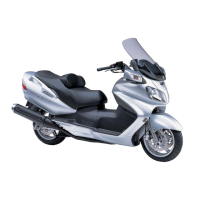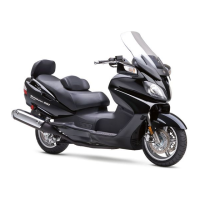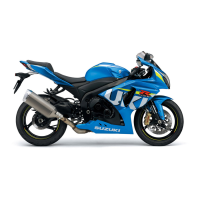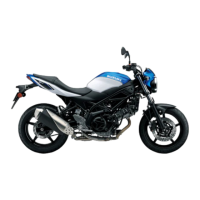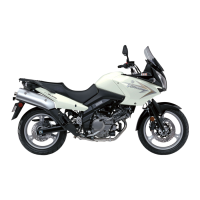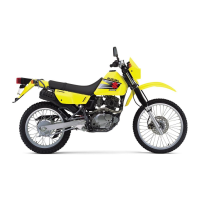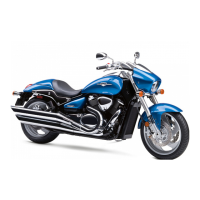10-2 ELECTRICAL SYSTEM
CAUTIONS IN SERVICING
CONNECTORS
• When disconnecting a connector, be sure to hold the termi-
nals; do not pull the lead wires.
• When connecting a connector, push it in so it is firmly
attached.
• Inspect the connector for corrosion, contamination and any
breakage in the cover.
COUPLERS
• With a lock-type coupler, be sure to release the lock before
disconnecting it. When connecting a coupler, push it in until
the lock clicks shut.
• When disconnecting a coupler, be sure to hold the coupler; do
not pull the lead wires.
• Inspect each terminal on the coupler for looseness or bends.
• Inspect each terminal for corrosion and contamination.
CLAMPS
• Refer to the “WIRING HARNESS ROUTING” section for
proper clamping procedures. (11-14 to 11-17)
• Bend the clamp properly, as shown in the illustration.
• When clamping the wire harness, do not allow it to hang
down.
• Do not use wire or any substitutes for the band-type clamp.
FUSES
• When a fuse blows, always investigate the cause, correct the
problem, and then replace the fuse.
• Do not use a fuse of a different capacity.
• Do not use any substitutes for the fuse (e.g., wire).
SEMI-CONDUCTOR EQUIPPED PARTS
• Do not drop any part that contains a semi-conductor (e.g.,
ECM, CVT control unit, regulator/rectifier).
• When inspecting the part, follow the inspection instructions
carefully. Neglecting proper procedures may cause this part
to be damaged.
INCORRECT

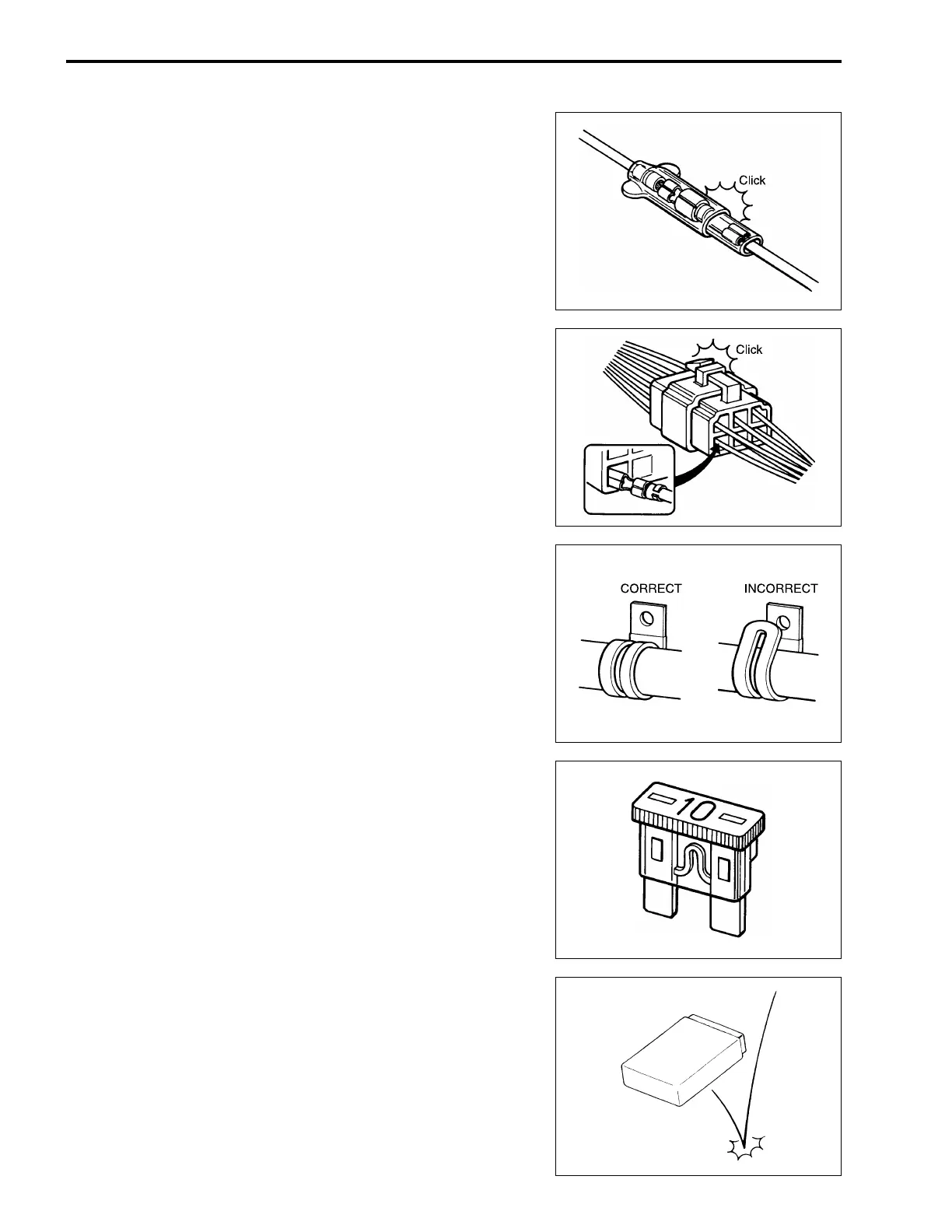